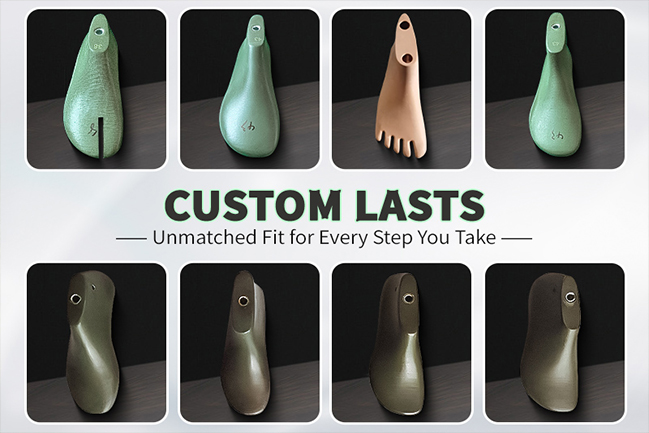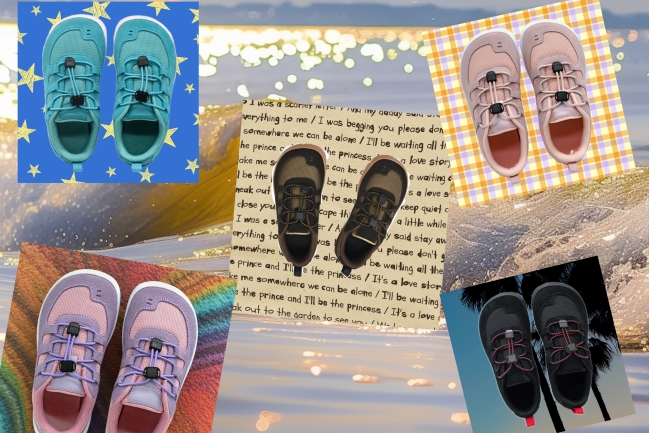As a professional manufacturer deeply engaged in the barefoot shoe field for over a decade, we receive such a question from consumers every day: “Could you recommend a pair of barefoot shoes suitable for everyone?” Today, we will start from biomechanics, ergonomics and practical cases to provide you with a detailed analysis of the important issue concerning foot health – “Why there are no universal barefoot shoes”.
I. Differences in Human foot Shapes: Far More complex than Imagined
In the footwear manufacturing industry, we are accustomed to saying, “There are no two exactly identical feet in the world.” According to the research data of the International Foot and Ankle Association, the diversity of human foot shapes is mainly reflected in the following dimensions:
Three-dimensional dimensional differences
Length: Adult shoe sizes range from 35 to 50, spanning up to 16 sizes
Width: It can be classified into five grades: ultra-narrow type (AA), narrow type (B), standard type (D), wide type (2E), and ultra-wide type (4E)
Thickness: The height difference of the top of the foot can reach more than 20mm
Structural feature differences
Arch types: They include three basic types: low arches (flat feet), normal arches, and high arches. Each type can be further subdivided into three subtypes
Toe arrangement: Egyptian foot (about 60% of the population), Greek foot (about 30%), square foot (about 10%)
Calcaneal Angle: The normal range is 5 to 15 degrees. If it exceeds this range, there is a problem of varus or valgus
Dynamic feature difference
Gait patterns can be classified into three basic types: neutral gait, excessive internal rotation, and excessive external rotation
Pressure distribution: The pressure distribution on the soles of the feet of those who land on the forefoot and those who land on the heel is completely different
We once conducted foot shape scans on 20,000 volunteers worldwide, and the results showed that less than 5% of the individuals fully conformed to the “standard foot shape”. This data confirms a fundamental consensus in the footwear industry – the true “standard foot” hardly exists.
2.Limitations of Universal Barefoot Shoes
Some barefoot shoes on the market that claim to be “suitable for everyone” are actually sacrificing professionalism for universality. This design concept may bring about the following problems:
Structural discomfort
❌ Width mismatch: wide-footed users will experience compression on both sides, while narrow-footed users lack the necessary wrapping
❌ arch conflict: universal design cannot take into account the special needs of high and low arches
❌ heel cup problem: both too loose and too tight heel cups can affect the stability of the calcaneus
Functional defect
❌Gait interference: Incorrect toe curl can alter the natural gait
❌Muscle imbalance: Inappropriate shoe sole hardness may cause compensatory work of the small muscle groups in the foot
❌Temperature regulation: It cannot meet the different needs of users in cold and tropical regions
Health risks
According to a research report by the American Association of Podiatrists (APMA) :
❌Wearing unsuitable barefoot shoes for a long time can increase the risk of plantar fasciitis by 47%
❌The deterioration rate of hallux valgus (commonly known as “big toe bone”) may increase by three times
❌The incidence of knee pain has significantly increased
We once interviewed 1,000 users who wore “general-purpose” barefoot shoes. The data six months later showed:
68% experienced discomfort to varying degrees
42% stopped using it due to persistent pain
Only 12% indicated complete adaptation
3.Scientific Shoe Selection Guide: From Measurement to Fit
Precision Measurement Trilogy
Step One: Static measurement
🟢 Use a professional foot meter to measure the length and width of your feet
🟢 record the height of the arch (using the wet foot test method)
🟢 determine the type of toe arrangement
Step Two: Dynamic assessment
🟢 observe the distribution of force points when walking
🟢 analyze gait patterns (can be captured in slow motion with a mobile phone)
🟢 detect foot pressure distribution (professional shops can provide scanning services)
Step Three: Functional Requirements Analysis
🟢 Daily wear: focus on comfort
🟢 For sports: consider specific requirements
🟢 Special purposes: such as shoes for diabetes, etc
Detailed Explanation of the Adaptation Plan
Width adaptation scheme:
| Foot Type | Characteristics Recommended | Solution |
| Extra Narrow (AA) | Width < Foot Length × 0.35 | Adjustable Hook-and-Loop |
| Narrow (B) | Width ≈ Foot Length × 0.36-0.38 | Standard Narrow Last + Stretch Upper |
| Standard (D) | Width ≈ Foot Length × 0.39-0.41 | Most Standard Models |
| Wide (2E) | Width ≈ Foot Length × 0.42-0.44 | Dedicated Wide-Width Designs |
| Extra Wide (4E) | Width > Foot Length × 0.45 | Custom-Made Options |
Arch fitting solution:
Low arch group:
Choose a completely flat-bottomed design with zero drop
The hardness of the sole is recommended to be between 40 and 50 Shore
Avoid any artificial “support” design
High arch group:
A midsole cushioning of 3-5mm can be considered
Choose shoe upper materials with better elasticity
The heel cup requires additional stability
Special demand solutions:
Diabetic users: Seamless lining + detachable insoles
Arthritis patients: Easy to put on and take off design + temperature adjustment
For athletes: Mechanical optimization for different sports

4.Analysis of the width differences between barefoot shoes
Today, in the pursuit of natural gait and foot health, Barefoot Shoes are increasingly favored by sports enthusiasts and pursuers of a healthy lifestyle. However, many consumers who are new to barefoot shoes often have a misunderstanding: they think that the width of all barefoot shoes is the same. In fact, just as traditional shoes come in different widths, there are also significant differences in the width of the toe and the overall shoe shape among barefoot shoe brands, and even among different models of the same brand. As a manufacturer of barefoot shoes, today we will delve into this important yet often overlooked topic.
Why are there differences in the width of barefoot shoes?
The core design concept of barefoot shoes is to enable feet to move naturally as if they were barefoot, but this does not mean that all barefoot shoes use exactly the same shoe last. Different brands have slightly different understandings of the “natural foot shape”, and the differences in foot shapes among the target user groups have led to variations in width.
Some brands may pay more attention to adapting to the foot shapes of consumers in Europe and America, while Asian brands may make adjustments for the relatively wider foot shapes in Asia. In addition, barefoot shoes for different purposes – such as running, hiking or daily wear – may also have different focuses in width design.
A comparison of the widths of mainstream barefoot shoe brands
Standard width type: such as Vivobarefoot, Merrell Vapor Glove series, suitable for most medium-width foot types
Extra-wide type: such as Xero Shoes, Softstar Primal series, providing extremely spacious toe space
Relatively narrow type: For some European brands such as Wildling Shoes, the toe of the shoes is relatively narrow
Asian extra-wide style: Some barefoot shoes specifically designed for the Asian market, such as some of our styles, are tailored to the common feature of wide forefeet among Asians
5.Our technological innovation: Making every foot find its home
Based on a profound understanding of the diversity of foot shapes, we have developed industry-leading solutions
Modular design platform
Replaceable insole system: offers a variety of thickness and hardness options
Adjustable upper: The width adjustment range can be customized as desired
Modular outsole: Freely combine the hardness of the front and back palms
Seasonal adaptation plan
Summer Edition: Enhance breathability and take into account foot swelling
Winter version: Reserve space for the insulation layer to accommodate foot contraction
Rainy season special: Quick drainage design
6.Five Stages of Healthy Shoe Wearing
Even if the right barefoot shoes are chosen, a scientific adaptation process is still needed:
Awakening period (1-2 weeks)
The daily wearing time should be no more than 1 hour
The key is to activate the plantar fascia
Adaptation period (3-4 weeks)
2 to 3 hours every day
Start a short walk
Intensive period (5-8 weeks)
Wear all day long
Introduce basic training
Consolidation period (9-12 weeks)
Engage in specialized sports
Muscle memory formation
Free period (after 12 weeks)
Fully adapt to the natural gait
Enjoy the pleasure of walking barefoot
Conclusion: Respect differences and return to nature
The essence of barefoot shoes is not simply to remove the heel and support, but to help the feet restore their natural functions through scientific design. As orthopedic expert Dr. Sarah Collins put it, “Trying to fit all foot shapes with the same pair of shoes is as absurd as trying to correct all vision problems with the same pair of glasses.”
We promise to continuously invest in research and development to provide professional solutions for every type of foot shape, ensuring that every user can find the barefoot shoes that truly suit them.
Have you ever experienced the trouble of choosing shoes? Welcome to contact us and share your story. Our expert team will offer you personalized advice. Remember, the right barefoot shoes should fit as well as a tailor-made suit – the invisible difference determines a completely different experience.




